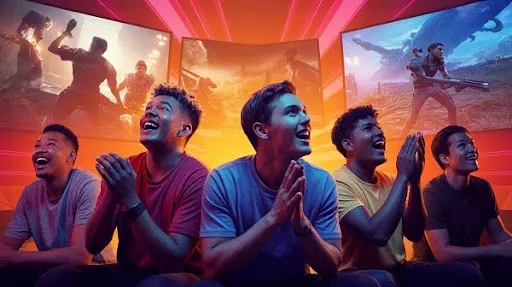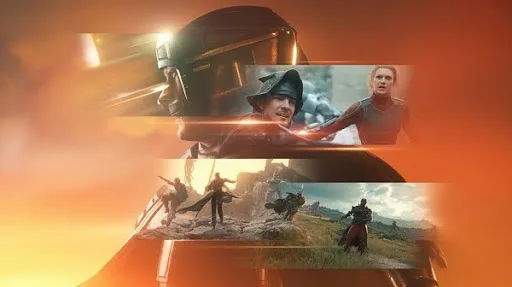Some game trailers stay in your head long after the screen goes dark. One minute you’re scrolling, the next you’re glued to a clip that hits you harder than you expected. A sharp line of dialogue. A slow shot of a shattered city.
A punch of music that sets off something inside you. That moment is exactly why trailers matter more than ever. Players are smarter, faster to judge, and quicker to move on. A game gets only a few seconds to spark interest, and trailers carry the weight of that moment.
The impact of game trailers isn’t just about hype. It’s about shaping the way players feel about a game before they ever touch a controller. It’s the handshake, the spark, and the promise.
It’s storytelling, strategy, and psychology woven together by talented teams like game production companies, video animation agencies, 3D artists, and editors who know exactly how to pull a viewer in.
For studios that treat game trailer production as an afterthought, the cost can be brutal. Visibility drops. Sales drag. Players scroll past without a second look. But for teams that see trailers as an essential part of game marketing, things flip. Curiosity grows. Wishlists climb. Communities react. Trailers become the game’s voice long before the first build hits testers.
Prolific Studio has seen this happen again and again. When a trailer lands right, it sticks. It moves people. It shapes memories. And its influence outlives the launch window. That’s the everlasting power we’re talking about.
How the Impact of Game Trailers Shapes Player Perception
A good game trailer doesn’t just announce a title. It shapes how players expect the game to feel. Tone, pacing, music, camera movement, all of it forms an instant emotional map. Before the first preview, players might know nothing about the game. After a strong trailer, they walk away with a sense of its soul.
This is why game trailer services sit at the center of game marketing strategies. Fans look for clues:
- What’s the vibe?
- How does the gameplay look?
- What makes this game different?
Every shot becomes a hint. Every line becomes a promise. Every frame sets the stage for the reaction that follows.
A trailer that nails its identity pulls players closer. A trailer that feels confused or out of sync pushes them away. The emotional impact lasts far longer than most studios realize.
The Psychology Behind a Great Game Trailer
There’s a reason some trailers replay in your mind days after watching them. That’s not an accident. It’s careful work built around the psychology behind a great game trailer.
Players respond to cues. They read tone faster than text. They feel tension in the timing of a cut or the drop of a soundtrack. Game trailer production uses this instinctive response to create emotional anchors.
Here’s what hits hardest:
Emotion builds attachment
A single shot with the right score can do more than a thousand lines of marketing copy. Fear, excitement, sadness, hope, when a trailer wakes those feelings, you remember it.
Mystery builds curiosity
Give players just enough to make them think. Not a full breakdown. Just a spark.
Visual clarity builds trust
Players notice when editing feels smooth, when the storytelling is tight, and when the footage looks consistent. This signals quality without needing to say it out loud.
Rhythm builds anticipation
Good trailers breathe. They aren’t constant noise. A pause before a reveal hits harder than any explosion.
This is why the best game trailers get replayed endlessly. They hit the emotional sweet spot while staying visually simple and clean.
Why Storytelling in Game Marketing Matters More Than Ever
Games are no longer judged by graphics alone. Players want a connection. They want a reason to care about a character or a journey. Storytelling in game marketing turns a trailer into something bigger than a preview.
It gives meaning to the game’s mechanics, visuals, and style.
Take a chaotic action game. You can show fireballs and monsters for two minutes, but the impact fades fast. Add a simple moment of tension or humor or loss, and the entire experience reshapes itself.
Even casual or upbeat games benefit from this. A small emotional touch, a music cue, a character close-up, a quiet reveal, can transform engagement completely.
Narrative tone is the backbone. And players feel it instantly.
What Game Production Companies Know About Trailer Influence
Teams that work daily with concept artists, animators, and editors understand how game trailers change the entire course of a launch. They know that:
- A clear trailer boosts pre-orders.
- A confusing trailer kills momentum.
- A memorable game trailer becomes part of the game’s identity.
This is why the strongest game production companies invest heavily in pre-planning before a single frame is animated. They sketch sequences, build early concept art, test soundtracks, and map out emotional beats.
They know trailers aren’t decorations. They are strategy.
Studios that cut the trailer budget often pay for it later in slow engagement. The cost of game trailers pays off because trailers create attention that no ad campaign can match.
Cinematic Style and Gameplay: Finding the Balance
The debate between cinematic style and gameplay doesn’t end. Both matter, and both play different roles.
Cinematic moments create mood
Bold lighting, close-up shots, slow motion, and dramatic VFX set the emotional tone. They tell the viewer what the game feels like.
Gameplay clips create trust
Players want to see the game in action:
-
- Movement
- Combat
- HUD elements
- Animations
- Gameplay mechanics
- Special abilities
When trailers hide gameplay completely, players notice. And they don’t respond well.
The best campaigns use both styles with precision. Cinematics to create the vibe. Gameplay to prove the experience.
Prolific Studio often uses a hybrid strategy in game animation services, merging VFX in games, motion shots, stylized lighting, and clean gameplay capture into one sequence. This creates energy without sacrificing honesty.
How Visuals and Game Art in Action Define the Trailer’s Identity
A game’s identity often comes alive for the first time in its trailer. The way visuals and game art in action appear on screen becomes the foundation for how players imagine the game.
High-end projects might use advanced 3D animation services. Indie titles may embrace low-poly graphics in games. Some teams want hand-drawn aesthetics built through 2D animation services.
Each style sets expectations for tone and gameplay.
A gritty shooter with painterly textures says something different from a neon sci-fi game with slick shading and fast lighting. This contrast helps players instantly understand the vibe of the game’s world.
Trailer artists amplify these styles through framing, movement, transitions, and color grading. The goal is simple: turn your game art into moments that hit instantly.
Mistakes in Game Trailers That Hurt Player Engagement
Plenty of game trailers miss the mark. Some feel flat. Some confuse players. Some overdo everything at once. The most common mistakes in game trailers are surprisingly avoidable.
Only showing cinematics
Highly polished cutscenes look stunning, but don’t help players imagine the real experience.
Spoiling major moments
Revealing major plot points kills emotional payoff.
Unclear tone
A trailer promising intensity for a game built around humor creates confusion.
Overloaded edits
Jump-cuts every second exhaust viewers and hide the actual game.
No hook
A trailer that doesn’t land its emotional moment becomes background noise.
Great trailers don’t need to be long. They need to be intentional.
How Game Genres Shape Trailer Style
Different game genres demand different trailer approaches. A horror trailer leans into tension. A fighter leans into impact. A cozy sim leans into calm pacing and warm color palettes. Players expect a certain rhythm from each genre, and trailers that respect those patterns instantly connect with the right audience.
A fast-paced action title depends on sharp cuts, wide shots of movement, and tight sound design that snaps without overwhelming the viewer. A story-driven RPG needs slower sequences with emphasis on character shots, voice lines, and hints of emotional stakes.
A puzzle game benefits from clean transitions that highlight the logic behind each mechanic without turning the trailer into a tutorial.
Game trailer editors who understand genre behavior build trailers that “feel correct” to fans at first glance. This is how you make the impact of game trailers stronger. Trailers that ignore genre tone often confuse players. The visuals might look great, but the emotional rhythm feels off, and that disconnect weakens interest.
Why a Memorable Game Trailer Outlives the Launch Window
A memorable game trailer does more than push sales for launch month. It becomes part of gaming culture. Fans quote it. Reaction channels revisit it. Reddit threads dissect it. The emotional signature sticks long after the game hits shelves.
Trailers like this don’t rely on spectacle alone. They rely on timing. They rely on precise music choices. They rely on story beats that hit cleanly, sometimes in silence, sometimes in chaos. These are the trailers that give players goosebumps even after years.
For studios, a memorable trailer becomes a long-term asset. It draws new players during Steam sales. It revives attention during DLC drops. It sets the standard for the rest of the marketing cycle.
Prolific Studio sees this pattern constantly. The most successful campaigns come from teams willing to treat the trailer like a pillar, not an accessory. When you mix the right pacing, emotional cues, lighting, and voicework, the trailer becomes a pulse that never fades.
The Role of VFX in Games and Trailer Production
VFX artists play a huge role in how trailers land. The use of VFX in games helps shape atmosphere, but in trailers, its purpose changes slightly. The goal shifts from “supporting gameplay” to “clarifying tone.” A spark of energy from a spell, a shockwave, a dust trail, these touches help guide the viewer’s eye.
A subtle burst of particles can highlight movement. A glow can show power. A shadow drop can indicate danger. Good VFX don’t steal attention; they direct it.
When game trailer production teams layer these effects with clean editing, the footage becomes more expressive without feeling artificial. And that balance keeps viewers hooked all the way through.
Concept Art as the Foundation of Trailer Planning
Before a trailer editor starts cutting footage, before a level artist finishes a scene, before animators polish their cycles, teams build moodboards and concept art that shape the trailer’s entire aesthetic.
The trailer inherits its identity from these early sketches:
- Lighting direction
- Color temperature
- Character poses
- Environmental shapes
- Focal points
Concept art helps the team lock in an emotional direction long before production assets are finished. This lets the trailer team plan early shots, opening frames, transitions, and closing beats in advance.
The studios that treat concept art as a guiding tool usually create trailers that feel consistent from start to end.
Cinematic vs. Gameplay Trailers: When to Use Each Format
The argument around cinematic vs. gameplay trailers isn’t about which one is better. It’s about timing.
Cinematic trailers work best when:
- The studio wants to establish narrative tone.
- The goal is to attract new players unfamiliar with the game’s style.
- The team wants to highlight emotional stakes early.
Gameplay trailers work best when:
- The audience already has interest.
- The studio wants to show real mechanics.
- The game relies heavily on timing, movement, and physics.
Most successful launches use both formats in stages. Cinematic first. Gameplay next. Hybrid later. This sequence builds curiosity, then trust, then excitement.
Prolific Studio specializes in hybrid formats, using cinematic timing while keeping gameplay front and center. This way, players stay visually hooked without feeling misled.
How Game Animation Services Boost Trailer Quality
Strong animation gives the trailer its personality. Game animation services help translate raw game models into expressive moments.
For 3D titles, 3D animation services refine everything from facial expressions to body weight. These small touches make characters feel grounded in their environment. For stylized or indie games, 2D animation services add charm and personality that stand out instantly on screen.
Both approaches help build the rhythm of the trailer. Smooth character movement, fluid timing, precise poses, this is how trailers gain emotional texture. Even a simple jump animation can look iconic with the right timing and camera angle.
Animation gives the trailer a heartbeat.
The Cost of Game Trailers and Why It’s Worth It
Studios often ask about the cost of game trailers, especially for smaller teams. The price depends on length, animation quality, assets, rendering time, art direction, and editing complexity. Some trailers need multiple departments working for months. Others rely on existing assets.
But cost alone doesn’t determine value.
A trailer that hits the audience correctly can outperform huge ad budgets. One viral trailer can carry an entire marketing cycle. That’s why game production companies view trailers as investments, not expenses.
A strong trailer builds wishlists. It boosts early attention. It gives journalists something to share. It builds credibility. Most studios that underinvest early realize later that the trailer was the first thing the audience judged, and that judgment shaped everything.
Frequently Asked Questions
Why are game trailers so important today?
Trailers shape emotional expectations instantly. Players decide interest within seconds, so the trailer becomes the game’s first impression and strongest persuasive tool.
Do game production companies actually plan trailers early?
Yes. Strong teams build trailer concepts during early development using concept art, moodboards, and rough sequences. Planning early keeps the tone consistent.
How expensive are game trailers to make?
Costs vary widely. Animation style, rendering, editing complexity, voice acting, and VFX all influence the price. Even so, the long-term return usually outweighs the initial cost.
Should a trailer focus more on gameplay or cinematic scenes?
It depends on timing. Early campaigns use cinematic clips to build mood. Later trailers highlight gameplay mechanics to build trust. A mix usually works best.
What makes a memorable game trailer stand out?
Strong pacing, emotional cues, clean editing, consistent tone, and one memorable moment that players replay or share instantly.
Final Words
A game trailer can either be a forgettable clip or the strongest tool in your entire marketing strategy. Its influence shapes perception before players even learn the controls. With the right mix of storytelling, gameplay clarity, animation quality, and emotional timing, a trailer becomes a long-lasting asset that keeps players talking long after launch.
Prolific Studio, a world-renowned video animation agency, builds trailers that stay with players. If you want your trailer to hit hard, connect instantly, and carry your game forward, our team knows how to turn your vision into moments players remember.
Related Articles:










